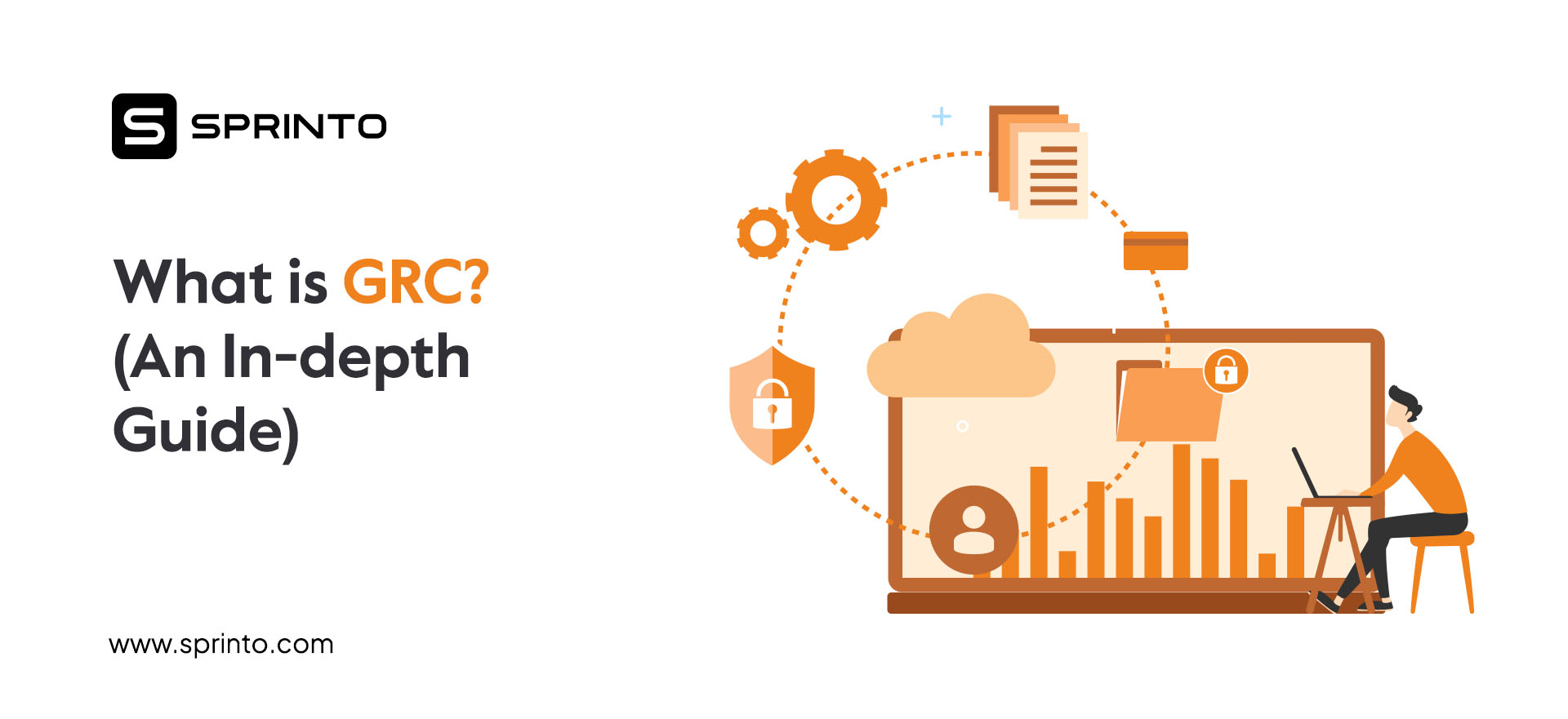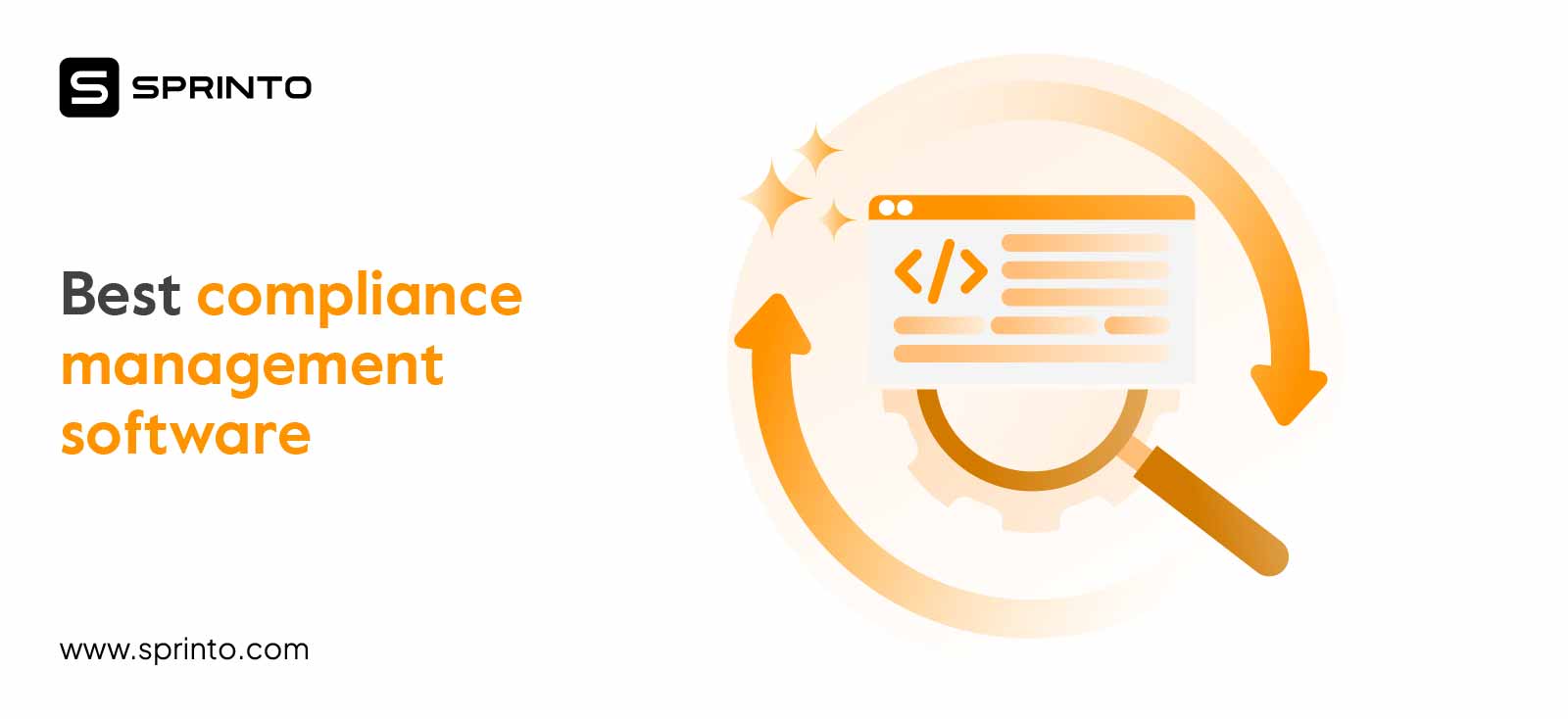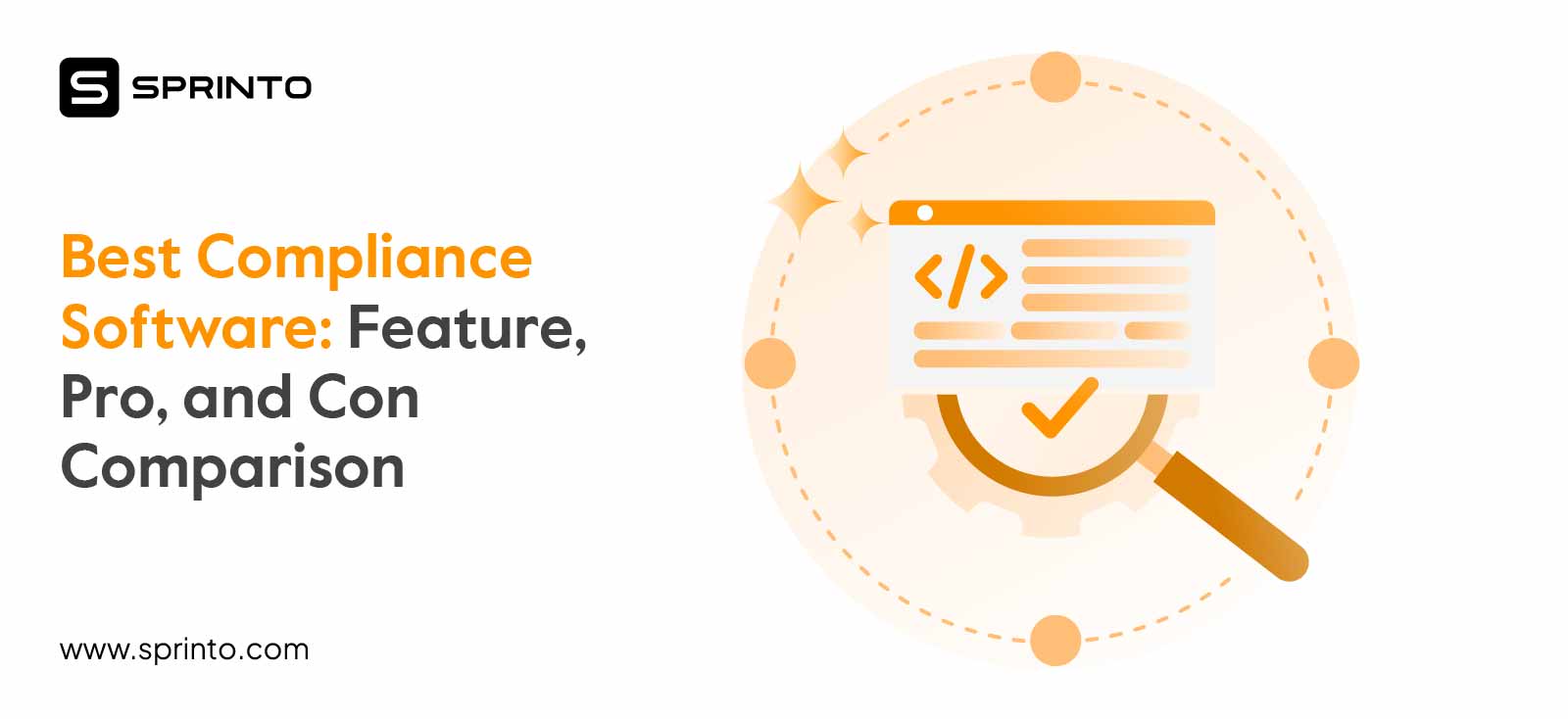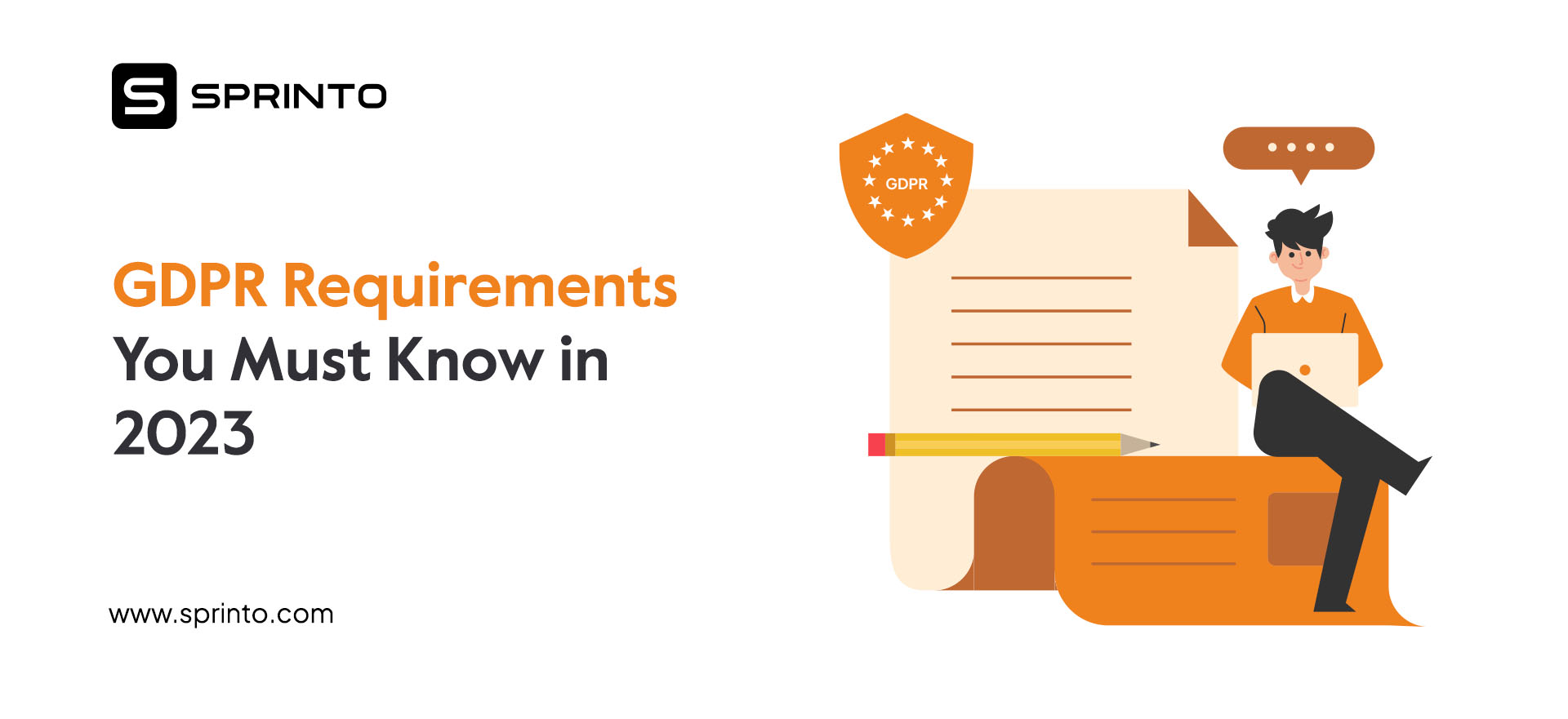An In-depth Guide To Governance, Risk, and Compliance (GRC)
Anwita
Jan 04, 2024

Coordinating people, processes, and technology while managing risks and staying compliant is easier said than done. Businesses often struggle to keep up with an increasingly fast-paced environment that leaves no room for strategic error.
Poor processes affect functions across the organization and ultimately affect the bottom line. GRC compliance emerged to fill this gap and reduce inefficiencies.
Wondering what is GRC and how it works? This article helps you learn the basics of Governance risk and compliance – the functions, principles, advantages, and more. If you make it to the end, we will introduce you to the next best thing in compliance.
What is GRC?
GRC (Governance, Risk, and Compliance) is a set of practices and tools that helps organizations implement risk management processes, manage their compliance status, and ensure an effective adherence with governing policies and rules.
Why is GRC important?
GRC is an important tool that minimizes risks, reduces wastage, and ensures cost-effectiveness by avoiding penalties due to non-compliance. It integrates various functions for enhanced collaboration and better visibility across departments and enables well-informed decisions.
GRC is crucial to ensure:
1. Better efficiency
Business operations like risk assessment, auditing, compliance management, and collaboration can get messy without tools like GRC. Using GRC management solutions helps organizations break down silos, efficiently comply, monitor processes, measure goals, and even predict risks.
2. Risk assessment
One of the central ideas for adopting GRC tools is to rescue risks across the business infrastructure. You can implement, automate, and manage risks to make informed decisions to visualize, manage, and investigate risks. Regulatory audits help to protect sensitive information financial records, trade secrets, and client data.
Companies that have previously encountered a risk-related incident or do not have adequate faith in their current processes can also implement GRC tools.
3. Operational efficiency
Investing in GRC helps to operationalize processes for resource allocation, addressing conflict of interest, and tracking goals. As risk management and third-party risks become costlier, companies can leverage GRC to strategize their objectives, improve performance, address uncertainty, and boost ROI.
When should a business consider GRC solutions?
Meeting business objectives in a dynamic landscape without breaking the bank has its own set of complexities. When you don’t have a system to manage compliance requirements, technology, people, and processes, the complexities start to pile up. If you are struggling to juggle everything together, consider governance, risk management and compliance to gain a structured approach to streamline deliverables.
When you combine decision-making, automation, collaboration and management of risk in a single framework, and have supportive senior executives, the result will be higher productivity at reduced costs and workflow efficiency.
How does GRC work?
GRC works by bringing policies, commonalities, procedures, and implementation management across the three principle functions, Governance, Risk, and Compliance, within a single fold. This helps with threat minimization, enhanced efficiency and better communication for improved governance.
GRC management works on 3 principles:
Governance:
Corporate governance is the management strategy that controls processes within the organization using information and control hierarchy. Governance activities help to ensure the accuracy and timeliness of information which results in better decision making.
Risk:
The set of processes that identifies, analyzes, and responds to gaps within the system that may affect strategic objectives.
Compliance:
Refers to maintaining legal requirements. You can achieve it by identifying appropriate requirements, assessing the current level of compliance, analyzing risks, and predicting costs of non-compliance against achieving compliance. Updating compliance documents, maintaining risk control, and generating reports is a crucial part of this process.
Want to automate compliance management functions? See Sprinto in action.
GRC Implementation Strategy
GRC implementation strategy requires meticulous planning, ongoing commitment to implementation and a cultural change for continuous improvement. Adopt a top-down approach to ensure buy-in from other stakeholders and enable gradual changes.
Here are 5 major steps to follow for developing your GRC implementation strategy:
1. Define objectives and goals
Involve key stakeholders to define the objectives of the GRC model and the goals you’d want the organization to achieve. For every goal, have SMART objectives and key performance indicators. Make sure to tie these goals to applicable regulatory requirements and your business context.
2. Review current practices
Take stock of your existing practices to understand your strengths and weaknesses around GRC practices. Conduct a risk assessment for deeper insights into the gaps and for prioritization of tasks. Appoint a GRC team for policy creation and enforcement based on findings.
3. Policy and procedure development
Create new policies for GRC implementation or update existing ones and define standard operating procedures along with roles and responsibilities.Communicate the changes or updates in policies across the organization and ensure acknowledgement by employees.
4. GRC solutions for implementation
Pick your GRC software for automation and implementation of processes. Start integrating your current tech stack with the tool to streamline tasks and setting up a reporting mechanism. Arrange for workforce training to get the team onboarded and start implementation.
5. Monitoring and improvement
Leverage the reporting dashboards of the GRC tool to gain visibility into GRC processes. Also maintain documentation of these processes and identify opportunities for improvement. This will be done by comparing the measures across KPIs and periodic reviews. Update policies accordingly and enable change management.
How Sprinto can help here: Sprinto can conduct a gap analysis of current compliance practices and implement controls to achieve continuous compliance. It can monitor these controls in real-time and can share live status on health dashboard for proactive improvement actions.
Top 3 modern softwares for GRC management
GRC management tools can take the administrative burden off from compliance tasks and expedite the certification process. The tools give you access to expert guidance and automated technologies for streamlining compliance and ensuring accuracy.
Here are the top 3 compliance management tools:
1. Sprinto
Sprinto is a compliance automation tool that is trusted by cloud companies across the world to power their compliance programs. It supports 15+ compliance frameworks along with custom framework management while breaking down compliance tasks into simple human tasks.
Key features
Makes risk management easier: Sprinto features a risk library for both quantitative and qualitative risk assessments along with risk response strategies and mitigation plans.
Enables role-based task management: The tool supports role-based compliance task assignment and access controls to ensure the right people have the right information at the right time.
Features purpose-built policy templates: Out-of-the-box compliance policy templates are purpose-built for tech companies to simplify enforcement and governance.
Assists with security training: The platform has built-in security awareness training modules which can be published across the organization and tracked for completion rates.
Provides complementary trust center: The tool lets you create public and private profiles to display your live compliance status and security posture to peers and clients.
Automates evidence collection: The compliance evidence against each compliance action is automatically collected by the dashboard and presented to the auditor on an independent dashboard.
2. LogicManager
LogicManager is an enterprise risk management software that assists with a range of compliance management solutions. The platform provides you a centralized place to manage compliance processes and has an in-built library for risks, regulatory standards and regulations.
Key Features
Facilitates change management: The platform automatically establishes remediation responsibilities whenever there are modifications in regulatory requirements for smooth change management.
Links regulations to business areas: The tool helps map regulatory controls to applicable business areas to facilitate better understanding of compliance requirements.
Offers compliance risk assessments: LogicManager supports integrated compliance risk assessments for risk mapping and risk remediation along with actionable insights.
Supports to-do lists and automations: You can track the progress of compliance initiatives with to-do lists and leverage automated alerts and reminders.
Features reporting dashboards: Configurable reporting dashboards and analytics capabilities help present detailed reports for management review and third-party auditors.
3. MetricStream
Metricstream is a corporate compliance solution with a suite of tools to streamline compliance workflows and report progress in real-time. It supports 7 compliance frameworks along with third-party risk management and compliance management.
Key Features
Helps manage corporate policies: The platform helps with policy creation, review, approval and acknowledgement. It also maps the policies with regulatory requirements for proactive implementation.
Features centralized compliance library: All compliance data sources can be managed from a centralized place for a single pane of glass visibility and assessment of compliance performance.
Facilitates vendor risk management: Metricstream lets you manage vendor risks throughout their lifecycle. The tool providers information such as financial status, credit rating, cyber risks etc. for enabling informed decisions about vendor relationships.
Offers compliance surveys: Any conflict of duty, ethical dilemmas and other compliance and risk disclosures can be managed through survey management software with automated workflows for creation and initiation.
Ensures efficient incident management: The tool offers standardized processes for incident management from identification and triage to resolution and closure. It enables key stakeholders to collaborate for incidents and facilitates better administration.
What are GRC levels of maturity?
Open architectures support better collaboration with external partners and flexibility to operate in multinational environments. Combining governance, risk, and compliance facilitates adaptability to an ever-changing market needs.
To implement GRC transformation successfully, it is crucial to assess and identify where you currently stand in respect to its final stage. A GRC maturity level model helps to make this comparison.
Here are the five levels of maturity models:
1. Siloed
The siloed stage is concerned with basic activities and has poor coordination among functions. These functions mostly work independently, while risk or compliance tasks are assigned to the logical management team. Training and awareness remain a closed off process within the concerned department. Business partners and vendors have little or no visibility into risk and compliance functions.
As the need for structured governance increases, so does the dependency on third-party consultants or experts. Any solution to meet GRC requirements is also limited to the operational process within that function, kickstarting basic GRC expertise around the domain.
2. Preliminary
In the preliminary stage, organizations start moving towards integration which helps to boost efforts within functions. Coordination between functional heads helps to demonstrate the benefits of GRC efforts. This ultimately results in the implementation of the GRC awareness framework and a better understanding of the framework.
At this stage, it is not uncommon to observe an increased requirement for a structured follow to handle risk or compliance issues. Organizations standardize control based policies for common issues to reduce repetitive tasks.
As coordination efforts build, long-term strategy takes shape. This is a long transition that involves documentation of existing strategies and monitoring roadblocks for each function. Tools and technology used within each group should be identified and technical infrastructure should align with common policies and issues.
3. Managed
While the managed stage demonstrates significant improvement in terms of operational efficiency, the management still has a lot of complexities to figure out. At the managed stage, teams to manage GRC strategy and its supporting technical infrastructure is established. As these functions start working together, a single source of truth for training and awareness related to risk and compliance is an important step to build a culture of compliance.
Strategies documented in the previous phase develop in the form of objectives, and technical and resource requirements. You can analyze by functions to fit into the larger GRC goal and eliminate silos. As workflows become more complex, management and prioritization is crucial to ensure proper execution. Implement standardized metrics to identify goal completion and monitor activities.
Finally, this stage is marked by an integrated GRC tech stack, elimination of basic tools like excel sheets and the technical team ensures proper implementation.
4. Transformation
The transformation stage is focused to improve collaboration across functions and is crucial to ensure that the organization is meeting the goals of its GRC program. Management teams oversee activities like technical coordination project prioritization.
Assessing awareness and integration of compliance will improve accountability. A shift in the way risk related processes function will be seen and defined using a common language. Project metrics will be reviewed and monitored to identify gaps.
A well managed and operational structure marks the transformation stage. It required a better management system for new requests and a controlled management program.
5. Advanced
In the advanced stage, we see all the pieces of the GRC puzzles put together – business goals, strategies, and objectives align with GRC processes.
Employees are well aware and trained on risk management. As functions use a standardized process of risks, controls, and assets, it results in a centralized view of risks that helps to prioritize tasks based on requirements. This helps to prioritize risks to identify, analyze, mitigate, and monitor risks.
This stage is marked by regular monitoring and planning to continuously improve operations. The overall technological ecosystem is steady
Conclusion
Maintaining business performance, keeping up with compliance requirements, meeting stakeholder expectations, and implementing technological consistency across teams is challenging. Juggling all these without a proper process can quickly turn into a nightmare – and goals don’t achieve by themselves.
The solution? Sprinto combines the principles of GRC framework – people, process, and tools to help you achieve a consistent approach to all your troubles. It automates practically 90% of tasks, monitors for risks throughout the tech stack, and trains your staff to be self-sufficient.
Talk to our experts about your unique requirements.
FAQs
What is a GRC framework?
A GRC framework is a model that helps to manage governance and risks within a business environment and the approach used by the company to identify policies attaining these goals.
What type of business needs GRC?
Any industry like IT, manufacturing, transport, logistics, food, and more can use GRC tools to streamline business processes.
What does a GRC specialist do?
A GRC specialist helps with framework development and GRC implementation processes. The analyst ensures effective risk management strategies are prioritized and regulatory requirements are met. The role also includes monitoring efforts and reporting the management.
What is the difference between GRC and IT GRC?
GRC is a broader framework that includes comprehensive risk and compliance initiatives. IT GRC on the other hand focuses on security risks related to information technology and data.
What is GRC compliance?
GRC compliance refers to adherence of industry standards and corporate policies within the GRC framework.GRC compliance platforms help to implement and monitor risk assessment strategies across the ecosystem. These include a wide range of risks revolving around finance, strategy, or operations. GRC compliance facilitates seamless risk evaluation, incident tracking, and easy decision-making by centralizing these functions.
Anwita
Anwita is a cybersecurity enthusiast and veteran blogger all rolled into one. Her love for everything cybersecurity started her journey into the world compliance. With multiple certifications on cybersecurity under her belt, she aims to simplify complex security related topics for all audiences. She loves to read nonfiction, listen to progressive rock, and watches sitcoms on the weekends.
Grow fearless, evolve into a top 1% CISO
Strategy, tools, and tactics to help you become a better security leader
Found this interesting?
Share it with your friends
Get a wingman for
your next audit.
Schedule a personalized demo and scale business

Sprinto: Your growth superpower
Use Sprinto to centralize security compliance management – so nothing
gets in the way of your moving up and winning big.


